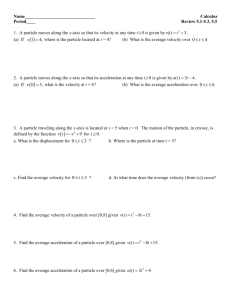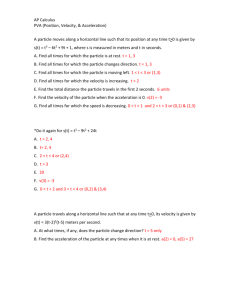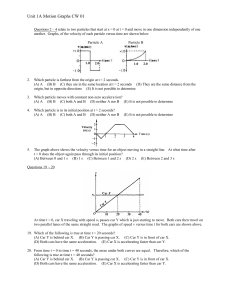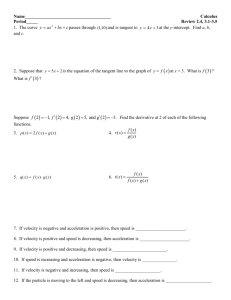Name HW -Kinematics with Integrations #2 A particle moves along a
advertisement
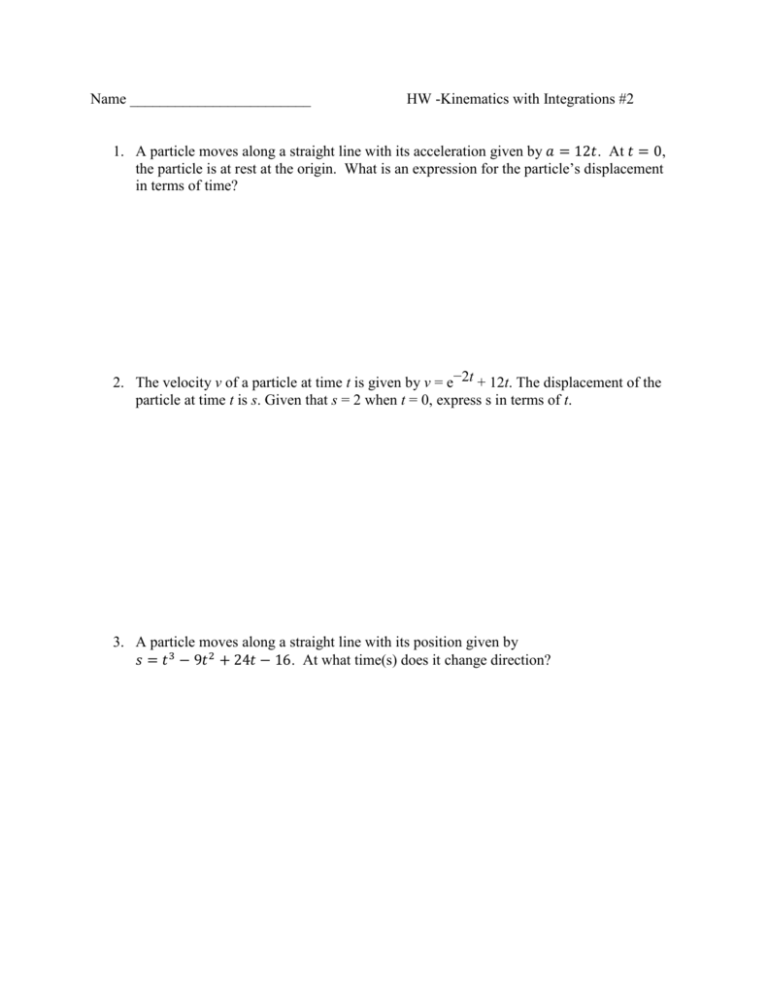
Name ________________________ HW -Kinematics with Integrations #2 1. A particle moves along a straight line with its acceleration given by 𝑎 = 12𝑡. At 𝑡 = 0, the particle is at rest at the origin. What is an expression for the particle’s displacement in terms of time? 2. The velocity v of a particle at time t is given by v = e−2t + 12t. The displacement of the particle at time t is s. Given that s = 2 when t = 0, express s in terms of t. 3. A particle moves along a straight line with its position given by 𝑠 = 𝑡 3 − 9𝑡 2 + 24𝑡 − 16. At what time(s) does it change direction? 4. A particle moves along a straight line with is velocity given by 𝑣 = 4𝑡 − 𝑡 2 + 15. What is the average velocity of the particle during 𝑡 = 0 to 𝑡 = 3? 5. A particle moves along a straight line with its velocity given by 𝑣 = 𝑒 𝑡 − 𝑡. What is the total distance traveled by the particle from 𝑡 = 0 to 𝑡 = 1? 6. A particle moves along a straight line with its velocity given by 𝑣 = 𝑒 𝑡 + 4𝑡. What is the average velocity of the particle during 𝑡 = 0 to 𝑡 = 2 (leave your answer in terms of e)? 7. The acceleration of a car traveling on a straight track along the y-axis is given by the equation 𝑎 = 5, where a is in meters per second squared and t is in seconds. If at 𝑡 = 0 the car’s velocity is 3 m/s, what is its velocity at 𝑡 = 2? Name __________________________ Extra credit In this question, s represents displacement in metres, and t represents time in seconds. ds (a) The velocity v m s–1 of a moving body may be written as v = = 30 – at, where a is a dt constant. Given that s = 0 when t = 0, find an expression for s in terms of a and t. Trains approaching a station start to slow down when they pass a signal which is 200 m from the station. (b) The velocity of Train 1 t seconds after passing the signal is given by v = 30 – 5t. (i) Write down its velocity as it passes the signal. (ii) (c) Show that it will stop before reaching the station. Train 2 slows down so that it stops at the station. Its velocity is given by v= ds = 30 – at, where a is a constant. dt (i) Find, in terms of a, the time taken to stop. (ii) Use your solutions to parts (a) and (c)(i) to find the value of a.



